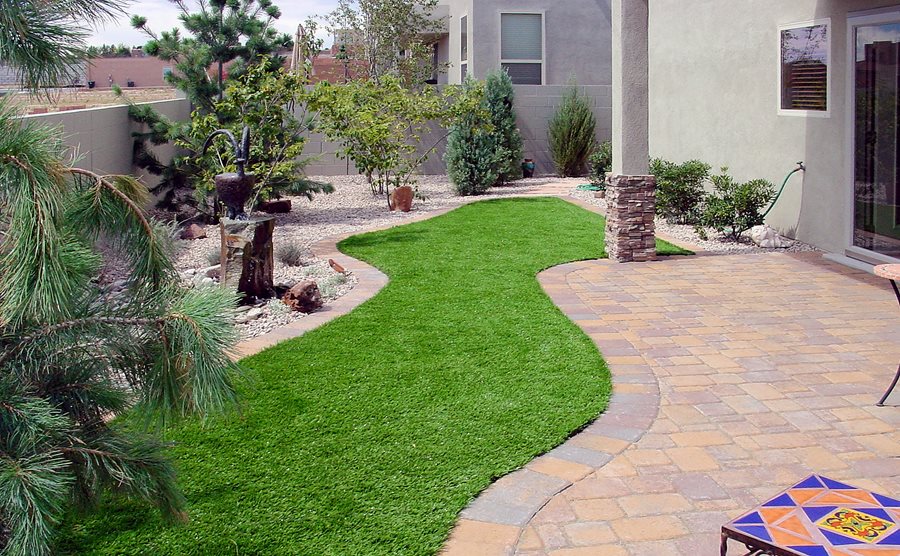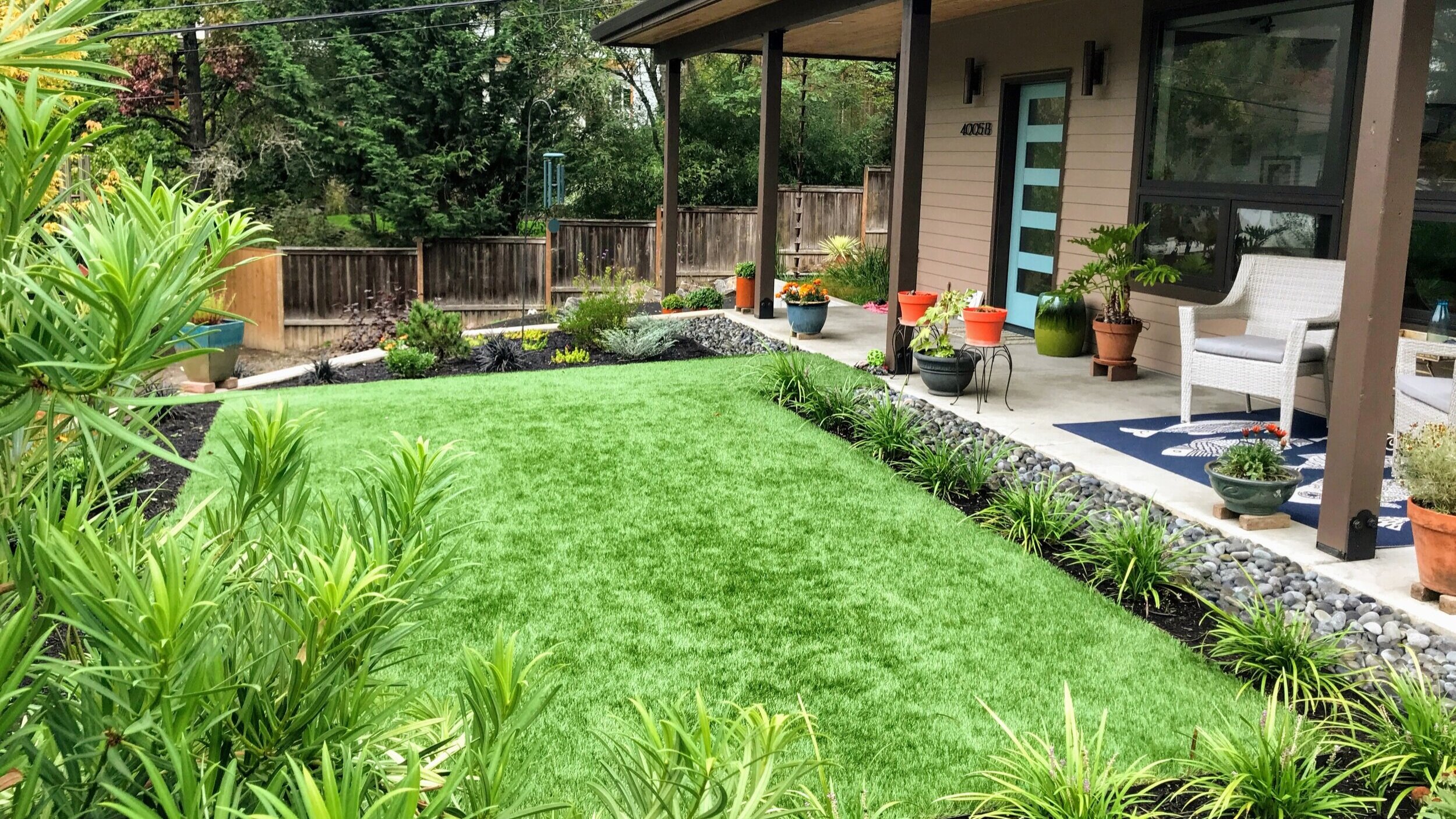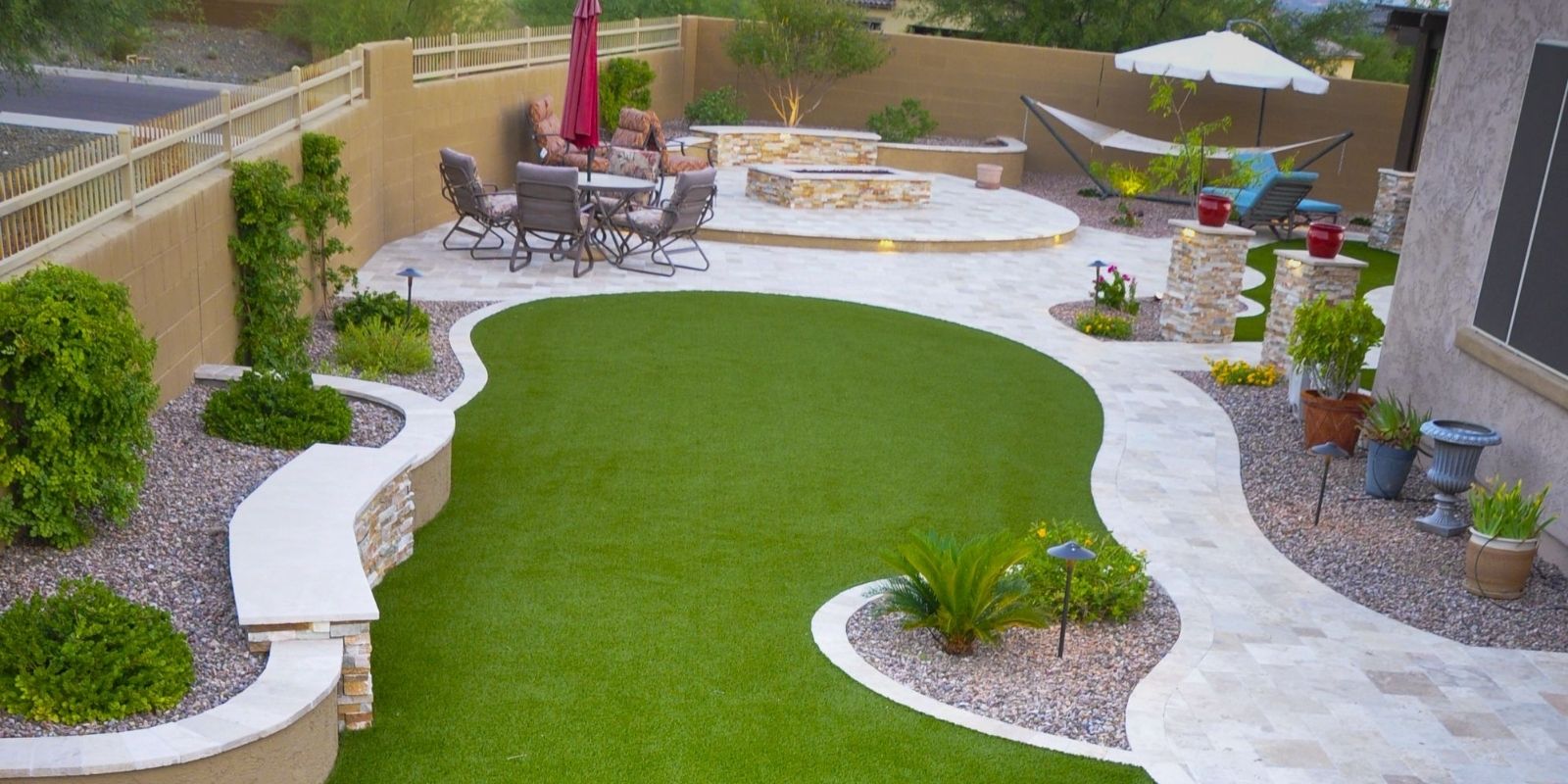Explore the Environmental Benefits of Opting for Synthetic Grass Solutions
The fostering of fabricated grass options provides an engaging possibility to address pressing environmental obstacles. By significantly reducing water use and lessening the application of unsafe chemicals, these alternatives not only promote sustainable landscaping yet also secure neighborhood environments.
Water Conservation Advantages
Among the most considerable advantages of synthetic grass is its ability to save water. Traditional grass yards need substantial irrigation, especially in areas prone to drought or water limitations. On the other hand, synthetic grass does not require watering, considerably reducing the overall need for water resources. This feature is particularly useful in arid areas where water scarcity is a pressing worry.
By removing the demand for routine watering, man-made grass contributes to sustainable landscape practices and assists alleviate the ecological influence of too much water consumption. Additionally, the preservation of water encompasses the reduction of runoff, which can bring about dirt disintegration and waterway contamination.
In addition, the installation of artificial grass enables communities and homeowners to assign water sources extra efficiently, concentrating on necessary uses such as alcohol consumption water and farming. The shift in the direction of synthetic grass not only promotes accountable water use yet also straightens with more comprehensive ecological goals targeted at preserving natural sources.
As areas significantly prioritize sustainability, the water conservation advantages of fabricated turf offer a compelling situation for its fostering in commercial and household landscaping tasks.
Lowered Chemical Use
The shift to synthetic grass considerably reduces the reliance on chemical treatments generally used in all-natural turf maintenance. Typical lawn monitoring normally involves the application of herbicides, pesticides, and fertilizers to promote growth and control parasites. These chemicals can pose risks to human health and wellness, local wildlife, and the setting, contributing to dirt and water contamination.
In comparison, synthetic grass eliminates the demand for these harmful compounds. Once set up, it requires minimal maintenance, mainly containing normal cleaning and infrequent infill replenishment. This decrease in chemical use not only profits the prompt environment but additionally contributes to broader eco-friendly security. By decreasing the release of synthetic compounds right into the ecological community, synthetic grass advertises healthier soil and water supply.
Furthermore, the absence of chemical drainage related to artificial turf installations helps shield local rivers from air pollution, sustaining water life and preserving biodiversity. Turf installation phoenix az. As communities increasingly prioritize lasting techniques, going with man-made turf offers a practical remedy that aligns with ecological preservation goals. Via this change, homeowner can delight in lavish green areas without compromising eco-friendly wellness, paving the means for an extra lasting future
Reduced Carbon Footprint

In addition, the setup of synthetic turf can cause substantial water preservation. Natural grass call for substantial quantities of water for watering, which not only contributes to the carbon footprint linked with water removal and therapy yet also stress neighborhood water sources. In contrast, synthetic grass requires very little upkeep, calling for no watering, therefore significantly reducing water usage and its associated power costs.
Additionally, the long life of synthetic grass contributes to its reduced carbon impact. With a life-span of as much as 15 years or more, the need for regular replacements is decreased, causing less waste and lower power intake in production and getting rid of conventional turf options. Generally, synthetic turf presents a lasting option for environmentally aware landscaping.
Habitat Preservation
Environment preservation is a critical consideration in the debate over landscape design options, especially when comparing synthetic grass to natural turf. Natural turf yards commonly require extensive upkeep, consisting of the use of fertilizers, herbicides, and chemicals, which can negatively affect regional communities. These chemicals can leach into the dirt and rivers, damaging indigenous flora and fauna and disrupting regional habitats.
In comparison, synthetic grass More Bonuses provides a possibility to lower the environmental impact of landscape design. By going with synthetic grass, house owners can decrease the disturbance of natural habitats linked with traditional grass care methods. Synthetic grass eliminates the need for dangerous chemicals, thereby safeguarding neighboring wild animals and keeping the integrity of surrounding communities. Additionally, the installation of synthetic grass can cause the conversion of former lawn locations into more biodiverse landscapes, such read here as pollinator gardens or indigenous plant areas, which can sustain neighborhood wild animals.
Ultimately, the transition to artificial lawn not just saves water and minimizes maintenance efforts but additionally cultivates a much more harmonious relationship in between human tasks and the natural surroundings, advertising environment conservation at the same time.
Long-Term Sustainability
Long-term sustainability is a vital consider assessing the advantages of synthetic grass over standard turf yards. Among the most substantial benefits of synthetic grass is its sturdiness; it can last as much as 15-20 years with minimal upkeep, whereas natural yard needs frequent reseeding and substitute. This longevity lowers the requirement for constant resources, such as water, plant foods, and pesticides, which are important for keeping a healthy and balanced turf lawn.
In addition, synthetic grass adds to a reduction in carbon exhausts related to grass treatment tools. Typical lawns commonly require gas-powered lawn mowers, trimmers, and blowers, every one of which add to air contamination. Arizona turf. In contrast, man-made turf gets rid of the requirement for such tools, promoting a cleaner environment
Additionally, the manufacturing of artificial grass significantly utilizes recycled materials, improving its sustainability account. As suppliers adopt eco-friendly methods, the ecological impact of artificial turf proceeds to decrease.

Verdict
The fostering of fabricated lawn solutions offers significant environmental benefits, including significant water preservation, decreased reliance on hazardous chemicals, and a reduced carbon impact. Additionally, fabricated turf aids in preserving all-natural habitats by decreasing land disruption and promoting lasting sustainability via the usage of long lasting products. Collectively, these aspects emphasize the capacity of fabricated grass to add positively to ecological health and offer a viable option to standard landscaping methods in a significantly resource-conscious world.
In comparison, synthetic turf does not require watering, significantly decreasing the general need for water resources. By decreasing the launch of artificial substances right into the ecological community, artificial turf promotes healthier dirt and water systems.
In addition, the installment of artificial grass can result in significant water conservation. In contrast, synthetic lawn needs Resources minimal maintenance, requiring no watering, thereby dramatically minimizing water use and its connected energy expenses.

Comments on “Personalized Turf Installation Phoenix AZ for Residences, Businesses, and Recreational Spaces”